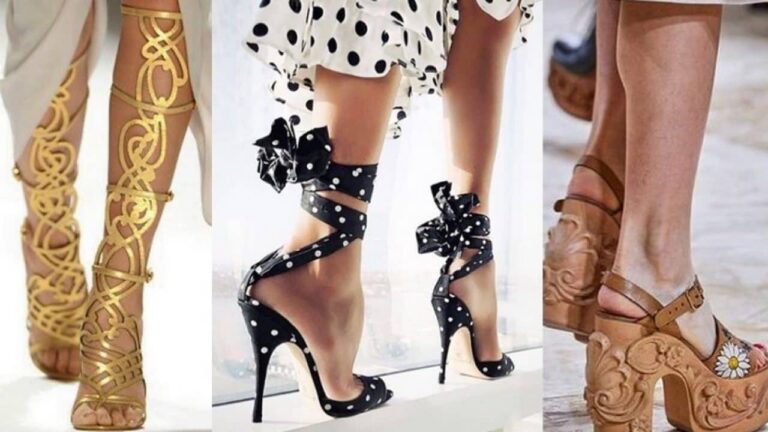How to String Pearls with a Clasp?
How to String Pearls with a Clasp: Pearl necklaces look beautiful when worn with elegant outfits, and if you are a pearl lover, you must have a favorite pearl necklace that you wear almost all the time. Wearing a pearl necklace often wears out the thread or the strand, and it may break easily. Not just the strand but the clasp might break too. In that case either you can go to a professional jeweler and have it re-knotted or restringed, or you can attempt to knot the pearls back with a clasp yourself.
If you are not too sure of yourself and do not want to end up causing more damage to your pearl necklace, you can try knotting an artificial pearl necklace. This way, you will end up practicing, and practice makes everything perfect, right? But, if the pearls are valuable, it is recommended that you do not try stringing the pearls back yourself and instead get a professional jeweler to get it done for you. Re-knotting pearl necklace from a jeweler ensures top quality service but at a price.

How Long will it take?
The whole process may take around 1-3 hours, depending on how fast you can work with strings and needles. This article only shows you the easiest way to string pearls with a clasp, but there are other complicated methods as well, which involved including a tube or a wire. Complicated methods take longer. The process mentioned in this article can be attempted by anyone. It does not require a different level of skill set to string pearls.
Things you need to String Pearls:
Here are the things that you need to start working on tying up your pearls in a knot:
- You need loose pearls or a broken pearl necklace.
- You need a beading needle to make stringing easier and faster. The need has a large eye but is extremely fine, which makes it perfect for the small hole in the needle.
- Buy a new clasp if the old one is broken, but you can also make do with the old one if it is working fine.
- You need silk or a synthetic thread. Although you can opt for a different color thread white is generally used for knotting pearls.
- Using a silk thread will require a toothpick or a super glue for the last knot.
- If you use a synthetic thread, keep a lighter or a match handy because you need it burns off the ends off the thread.
- It is highly irritating when the pearls keep rolling off while you are trying to string them. Keep the pearls in a non-rolling surface to keep them from rolling away.
- Lastly, you need scissors.
Before Knotting, wash your hands:
Why you need to wash your hands before stringing some pearls, you ask? Washing hands before the toilet are fine. It is to kill the germs from spreading. Washing hands before handling the thread are necessary because the thread is white in color, do you want to darken them with all the sweat and grime in your hands?
Now let’s get into the step by step guide of stringing pearls.
Step-by-Step Guide for Knotting Pearls
Follow these steps to learn the art of knotting pearls:
- First, you need to thread the needle. Now, this encompasses 3 stages. Take a silken thread of about 10 inches and then divide it into 3 sections. Dividing into 3 sections will make it thinner. The second stage involved enlarging the eye of the needle, not literally of course. Take one of the 3 threads and then thread it through the needle’s eye and then tie a knot. This will create a loop whose main purpose is to hold other threads that will be used for stringing the pearls. Next stage will require you to take a long thread again and double it over. Pull the ends of the thread through the very loop that you just created before this. Make sure that this thread does not slip out from the loop.
- Now that you are done threading the needle, the next step involves the clasp. Take the threaded needle and put it through one of the rings of the clasp and then again put it through the thread’s loop. Doing this will secure one end of the clasp, while the other end remains free.
- Here is when you remove the pearls from the old broken necklace. You can either do it one by one or remove the pearls all at once. If you choose the remove the pearls all at once, make sure that they do not roll away.
- Now that you have removed all the pearls start stringing all of them on to the thread. After you have strung all the pearls, the next thing you do is tie a double knot at the end to keep the pearls from slipping off the thread. The double knot has to be tied at the loose ends of the threads.
- Next, you have to put the first pearl on the thread close to the clasp, then you a tie knot there. Make sure that the knot is tight. Pulling strings apart after trying the knot helps tighten the knot.
- Bring down the second pearl and again tie a knot. Keep doing this for all the pearls.
- After all the pearls have been perfectly knotted in place, remove the knot at the end of the thread and put it through the free ring of the clasp and then secure a double knot.
Do not give up on your first try, if the knotting is not right enough:
Knotting pearls requires a lot of practice. You cannot expect to speed through the process in just a day, without any prior practice. It requires patience, as well. In your first or second try, the knotting may not be as tight, but do not give up yet. Keep trying. Also, it is best to finish knotting pearls in one sitting, instead of doing half the work and keeping the rest for some other time. So no matter how time-consuming it is and how much your neck and shoulders pain, keep at it!
When to Use Super Glue and Lighter?
After you have tied the last and final knot at the end of the clasp, put a little bit of super glue using a toothpick at the very end of the knot. Remember, you can use superglue when you use a silk thread and not otherwise. As soon as the glue is dry, cut the extra thread. Please be sure not to put any glue on the pearl. Removing the glue from the pearl is hell.
You can use a match or lighter for a synthetic thread. But be careful when using a lighter on a synthetic thread. You need to cut within ¼ inch of the knot on the thread, then use the lighter to light the ends of the thread. The ends will melt, and it will secure the knot. If you are not a professional, you can end up lighting the whole of the thread causing all of the knots to be undone, but do not give up just yet!
Source: https://www.pearlclasp.com






